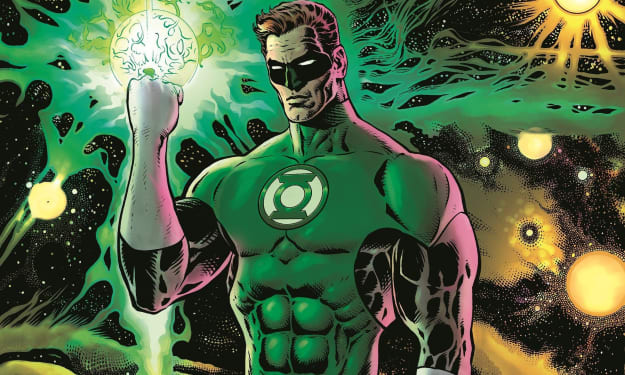
Considering Esther Blodgett’s journey through A Star is Born, one can assert that Los Angeles is a city that perpetuates a culture of identity destruction and reconstruction. In order to involve oneself fully in a city that perpetuates a misguided view of its own development, thrives off an industry of fictional storytelling, and lures lost souls from across the country with empty promises of new beginnings, one must learn how to mask their true selves in order to conform to the very nature of Los Angeles. Esther Blodgett is not ignorant of the lies she must create in order to achieve fame. Nor is she afraid of the drastic reformation she must undergo to become a Hollywood legend. Esther is young and naive however and does fully understand the consequences of her actions. Norman Maine, Esther’s icon and later husband, is a frightening look into the suffering caused by self-erasure. A Star is Born operates almost as a modern fable of Los Angeleno life that mirrors Esther Blodgett’s euphoric rise to fame at the cost of her identity with Norman Maine’s disappearance from the public eye after having been shunted away by the breakout new starlet.

In order for newcomers in the city of angels to spread wings of their own, they must mask their true selves and adopt a new facade. It only makes sense that while working in the professional world of lying and storytelling, stars such as Esther and Norman would rely on false impressions of themselves in order to maintain a career and a tolerable reputation. Esther’s first paying gig in the city is as a server for Hollywood elites. In order to turn their attention towards her talents in the off-chance any of them would be in a position to provide her an acting job, she impersonates pre-existing celebrities instead of sharing her true self. To contrast, as Norman begins to realize Esther’s fame is overshadowing his own he is more careless in how he presents himself. He returns to drinking, assaults a critic, and storming into an awards ceremony demanding an award for himself as worst performer of the year. Esther is awarded the best performer of the year because she has been able to “perform” her role for the entertainment industry while Norman has decided to resist and expose more of his true self.

One can look to an external source like 1999’s Bowfinger for further proof of this phenomena. Though it is a comedy, the film offers a smart parody of archetypal figures in the entertainment industry. Included in this cast of characters is a young starlet willing to do whatever it takes to advance her career, the egotistical movie star, and the hot shot movie producer. Steve Martin’s Robert Bowfinger is a prime example of the “fake it ‘til you make it” attitude that is rampant in the city. His film would never have been made if the cast and crew had known he was lying about his connections and success in the industry. The decision to tell the story from Bowfinger’s perspective suggests the filmmakers wished to predominately feature and parody the most prominent character trait within the entertainment industry in Los Angeles.

An individual can also derive their identity from the unique physical features that set them apart from others. After finally being discovered and on her way to stardom, Esther undergoes a physical transformation to blend into the role of Vicki Lester. She is essentially held under a microscope and experimented upon in an attempt to discover a look for her that will draw audiences to her films. Themes of the importance of physical appearances echo throughout other essential L.A. films as well as the real-life history of the industry. Sunset Boulevard’s Norma Desmond’s primary concern when she dips into hysteria at the end of the film is that she her makeup is camera ready. Replicants run rampant throughout Blade Runner’s dystopian Los Angeles in search of surgical alterations to extend their lifespan in the same ways celebrities have sought out plastic surgery to lengthen their youth.

The real world is reflective of these ideas as well. How often has an evening news show sacrificed valuable air time to criticise Cher’s plastic surgery or praise Chris Pratt’s new hot bod? A person’s physical appearance is the simplest way of communicating an identity to others and those in the limelight are the easiest targets for scrutiny. Once Norman Maine’s fame starts to fade away, his concern for his image dies too. As he has dedicated his life to an identity meant to be loved and seen by millions, he has no care for his image as soon his admirers turn their attention from him. He becomes reckless and physically destroys himself by succumbing to alcoholism. While Esther is just beginning to experience the glee that accompanies an entire country’s adoration for her constructed appearance, Norman suffers a crisis as he realizes the appearance he has maintained in his life is no longer desired and is thus not worth caring for anymore.
One of the key components of a person’s identity is their name. Historically when people have been stripped of their name in place of another or a number system, they were in a position lacking fundamental freedoms in one form or another. Esther Blodgett and Norman Maine have both had to endure the erasure of their name while involved with Hollywood. Blodgett is given the moniker of Vicki Lester in an attempt to more easily sell her to the general public. Norman Maine, originally Norman Hinkle, must also cope with his increasing anonymity as “Vicki” grows more prominent in the public eye. While honeymooning in the mountains, the married couple run into an everyday man who fails to recognize Maine or his name but adores Blodgett’s on-screen persona. This is perhaps one of the most revelatory moments of the film for Maine, as he is now faced with the tragic realization that neither he nor his pseudonym will survive the test of time.

One’s personal history is also arguably the most defining characteristic of personhood. To be devoid of a distinct authentic history is to be devoid of character entirely. The aforementioned replicants of Blade Runner have been imprinted with memories belonging to others in order to create the illusion that they are human. Like replicant leader Roy Batty, Norman Maine firmly understands the tragedy of living a fictitious life. As an actor, Maine has inhabited countless lifetimes. His ultimate downfall occurs when he realizes these lives and the possibility of others have disappeared and all that remains is reality. This is a cruel depiction of one’s life once they have been used up and tossed away by the unforgiving city of Los Angeles. Esther, unfortunately, fails to learn from Norman’s life path, even after he commits suicide to avoid living an unfulfilled existence. The last we see of Esther, she declares to the world that she is “Mrs. Norman Maine” and completes her transition into the hot new rising star that is sure to fade from the public eye in only a matter of years.
Through this rough analysis of A Star is Born, it should be perfectly clear that the film is the definitive depiction of the nature of Los Angeles. In essence, L.A. is a city about reconstruction and reinvention. Look no further than the city’s booming entertainment industry as proof of the obsession with fictionalization and image creation. Esther Blodgett and Norman Maine are both commodities of this business and victims to their identity-masking practices. Tools such as personality appropriation, physical reconstruction, name erasure, and personal history revision are used by said industry to remove the true identity of these stars and replace it with a product to be sold to millions. What sets this film apart from other Los Angeles narratives is the format they choose to present these themes. As Esther is sucked into the unforgiving conveyor belt of makeup artists redefining her look and talent agents changing her name, we also observe Norman suffering from the aftermath of this process and realizing that his life was all a charade. Despite the existential crisis Norman suffers at the end of his journey as a product of Los Angeles, Esther continues along the same path and refuses to learn from the mistakes of the past thus fully exemplifying the city’s theme of erasing history and identity.







Comments
There are no comments for this story
Be the first to respond and start the conversation.